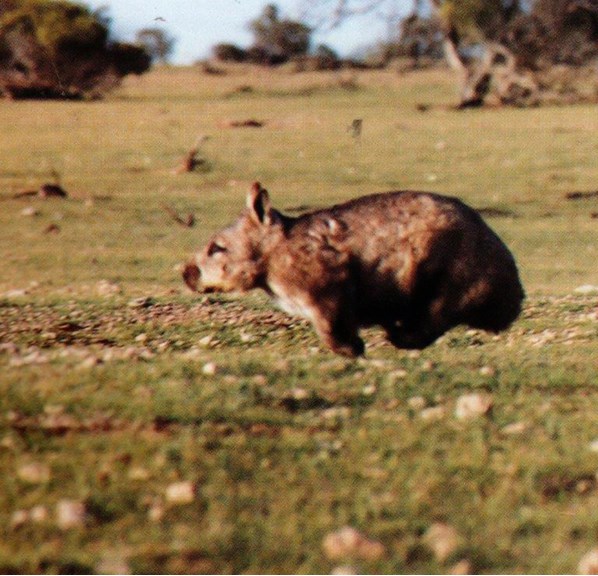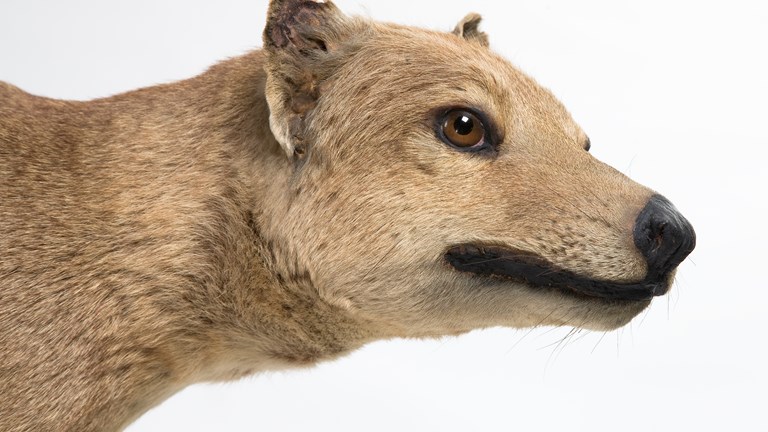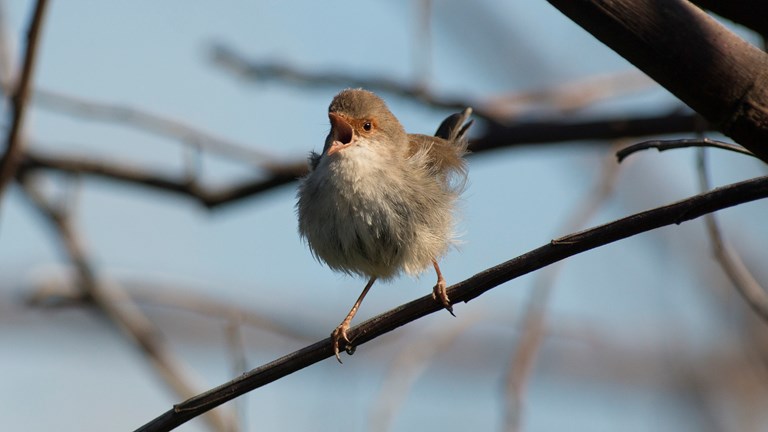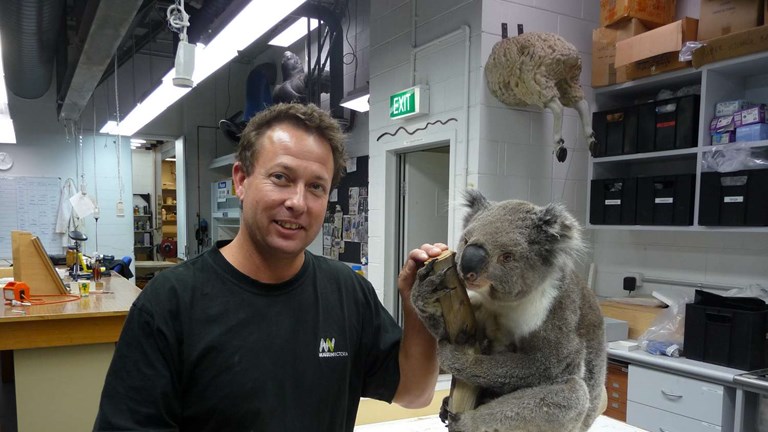How do we know wombats can run at 40km/h?
Uncovering the truth behind a wombat's top speed.
Originally published 7 February 2024; updated 22 April 2024
The often quoted ‘fact’ that wombats can run at 40km/h has undergone a fair bit of scrutiny lately.
And, thanks to some new information, it turns out we may finally have an answer—at least in regard to one species of wombat—after decades of this figure being based on miscommunication.
It all began with a seemingly innocent question from a man named Tim to Museums Victoria’s Public Information team:
‘I've seen the often quoted speed of 40km/h associated with the wombat. I believe this to be a modern myth and have not found a single primary source evidencing this…Can you please help me either find a source or paper where a wombat’s speed is actually measured?’
It got us thinking—where did the 40km/h figure actually come from?
Which led to a not-so-quick trip down a wombat hole.
Keeping pace with the truth
The Public Information team is used to dealing with some curly questions, but the source of the wombat speed was a challenge to chase down.
After exhausting the usual unsourced repetitions of the claim, including many dead ends, our searches led us to a government publication that specifically cited the fieldwork of a ‘Wells’ in 1984.
A look at the museum’s library unearthed a book that confirmed Rod Wells studied Southern Hairy-nosed Wombats in South Australia as part of his PhD thesis in the 1960s and 70s.
This thesis detailed the methodology for the fieldwork involving this specific species of wombat, but not of the 40km/h figure.
So, we reached out to Rod Wells, now Professor Emeritus of Palaeontology at Flinders University, to try to get a definitive answer.
But how to let someone know that a tiny fragment of their old research from a former life has been exaggerated and repeated, taking on a life of its own, without sounding like we’re looking to pin it on him?
Fortunately, Professor Wells took the news well and was most gracious in his response.
He wrote back almost immediately, agreeing with us about his work being the likely point of germination of the 40 km/h figure.
‘I think that probably goes back to the late 1960s/early 1970s when we would pursue Southern Hairy-nosed Wombats and catch them using something akin to a Lacrosse net,’ he wrote.
And he did remember them being capable of some speed.
‘They can bound quite fast over a short distance 100—200m, as they seek refuge in a burrow. At slower speeds they trot or walk,’ wrote Professor Wells.
But as for wombats being 40km/h fast?
‘I do not recall anyone using a stop watch to check their speed. It is more likely that the pursuit vehicle accelerated to 40km/h to catch them,’ he wrote.
‘I certainly do not recall an animal bounding alongside the vehicle at a sustained 40km/h, that is Usain Bolt (100m world record holder) territory.
‘I think this number may well have been misquoted out of context.’
And as for how it got taken out of context?
Professor Wells thought it could have been an off hand comment about his research to a documentary film-maker he worked with in the 1970s.
‘One has to be so careful with words,’ he wrote.
Professor Wells even sent us a photo of a wombat at speed—a definite athlete, focused and aerodynamic as a wombat can get.
And that seemed to be the end of it.
Without conclusive evidence that someone had recorded the speed of wombats, there was no way to definitively back up the popular figure as fact.
But it turns out someone else had been looking into this as well.
Setting the record straight
After originally publishing this story in February 2024 we were contacted by David Taggart, an associate professor at the University of Adelaide.
He has 30 years of experience researching southern hairy-nosed wombats.
‘We’ve never been interested in how fast they can run, just in catching them for other studies including diet, habitat use, reproduction, and climate change risk,’ says David.
But an incidental result of those studies, is the confirmation we’ve been looking for.
David and his team used their vehicle’s relative speed to clock the pace of the wombats when trying to catch them.
‘They can run at 40km/h,’ he says.
‘But they can’t sustain it— it’s a short, fast burst of about 50 metres.
‘If they stay above ground a couple of hundred metres they’ll just stop.’
So, why didn’t we come across David and Shannon’s research when originally looking into this?
‘The confusion may have arisen because we have never formally published this fact,’ says David.
He did contribute his team’s field observations to Strahan's Mammals of Australia but as yet there is still no peer-reviewed publication—the gold standard for scientific fact.
And while David had no plans for a dedicated study on the speed of wombats, due to its limited scientific value, he may be able to get a more accurate figure.
‘Seeing as there is so much interest in this, one of my students said we should get a speed camera to accurately measure them,’ he says.
‘So, we’ll try to do that.’
As for the speed of the other wombats, David says that verification is harder to get.
‘It’s very unlikely for northern hairy-nosed wombats, as they’re endangered.
‘Common wombats live in more vegetated areas so you may not see them reach those speeds, they’ll disappear into the scrub,’ he says.
‘I think all species would be capable of it, as the southern hairy-nosed wombat is the smallest of all wombats.’
But as is the ever-evolving nature of science, what is accepted today can be disproved by new observations or data tomorrow.
So, there is still some room for a little mystery.
Visitors to Melbourne Museum are invited to learn more about wombats and other modern Australian fauna in the Science and Life Gallery and Museums Victoria Research Institute Gallery, included as part of general museum entry.













